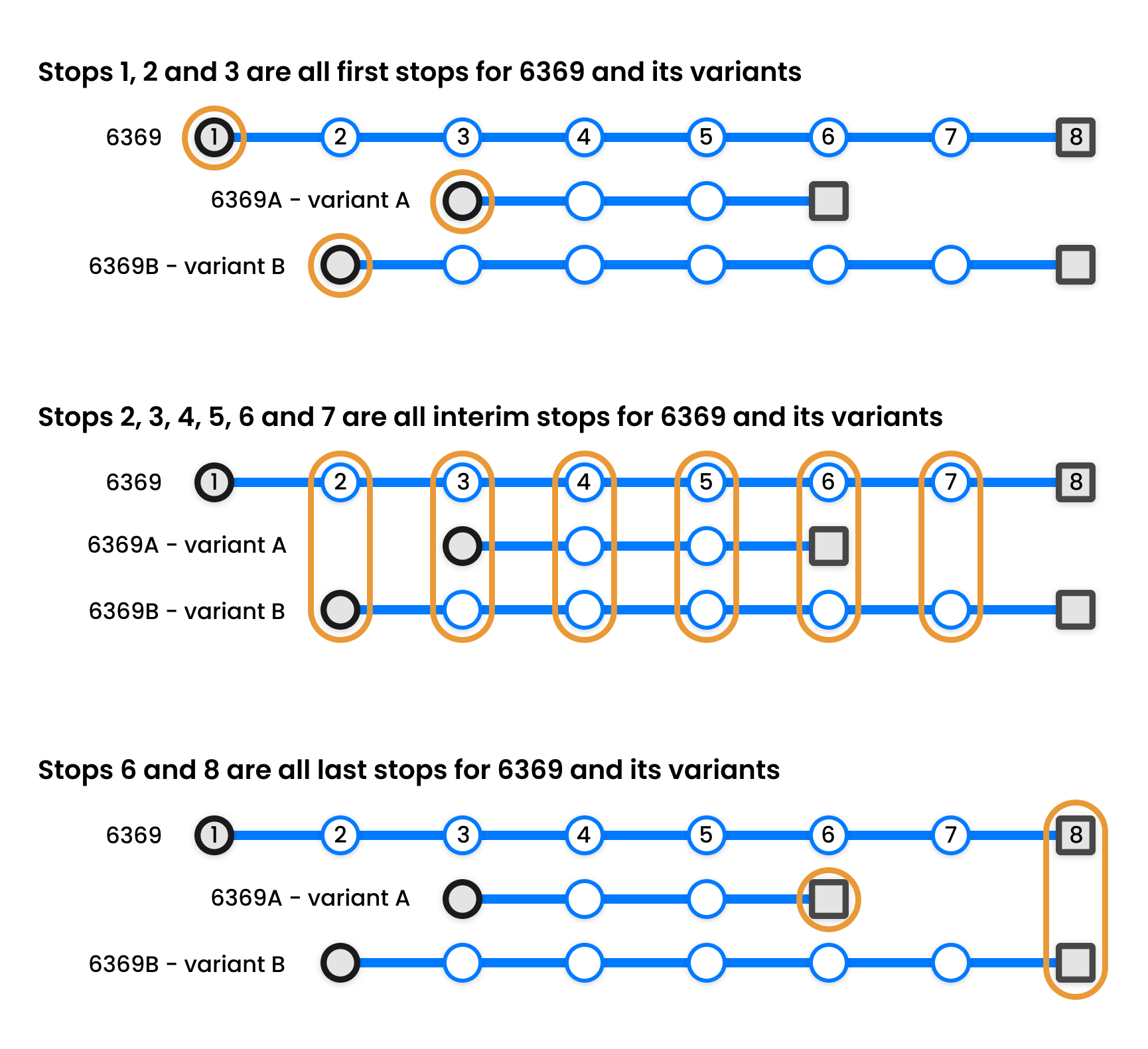What is a Variant?

How are stops classified? And how can there be multiple first and last stops?
Some routes have variants – where there is a deviation to the main journey pattern. These could be recorded by the service number having a suffix e.g. A, B, X etc.
The example above clarifies how we define the number of first stops, interim stops and last stops on a service.
Service 6369 has 8 stops in one direction.
It has two variants: 6369A (variant A) and 6369B (variant B). Variant A starts at stop 3 and ends at stop 6. Variant B starts at stop 2 and ends at stop 8.
Service 6369 therefore has three first stops (1, 2 and 3).
The 6369 has 6 interim stops between it’s first and last stop. This doesn’t change regardless of the variants so long as all the variants fall within the footprint of the main service.
6369’s last stop is stop 8. This is true for it’s variant B also, but variant A ends its journey at stop 6.
Service 6369 therefore has two last stops (6 and 8).
